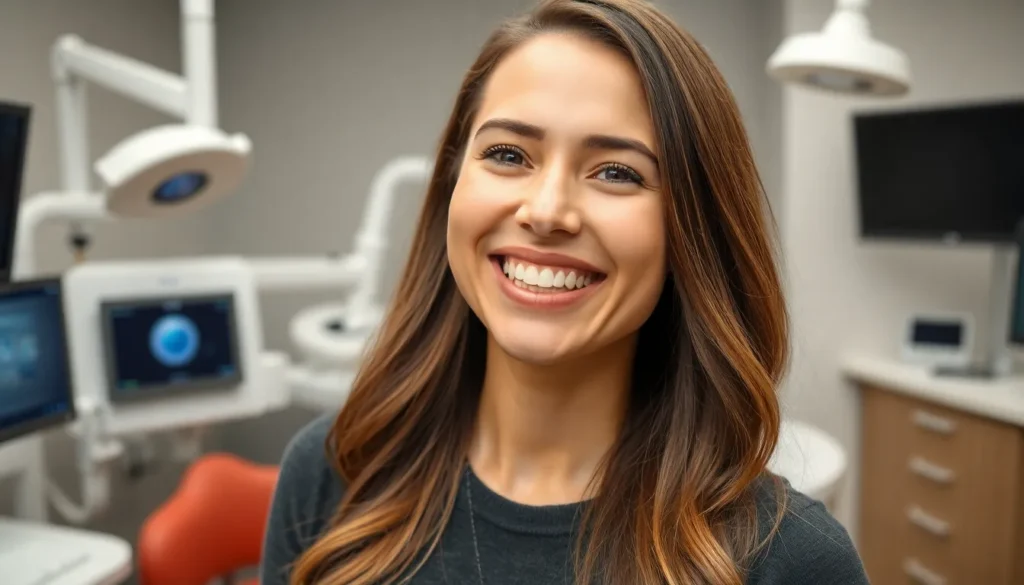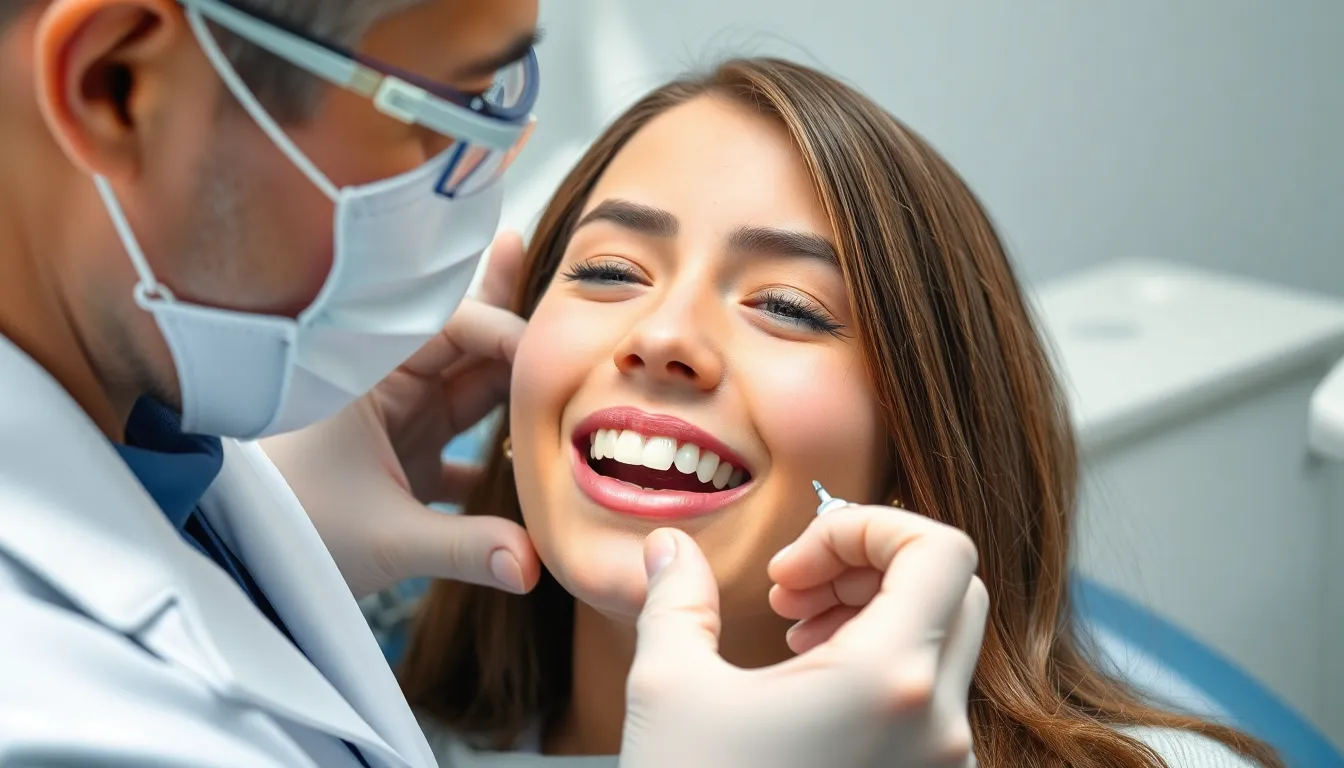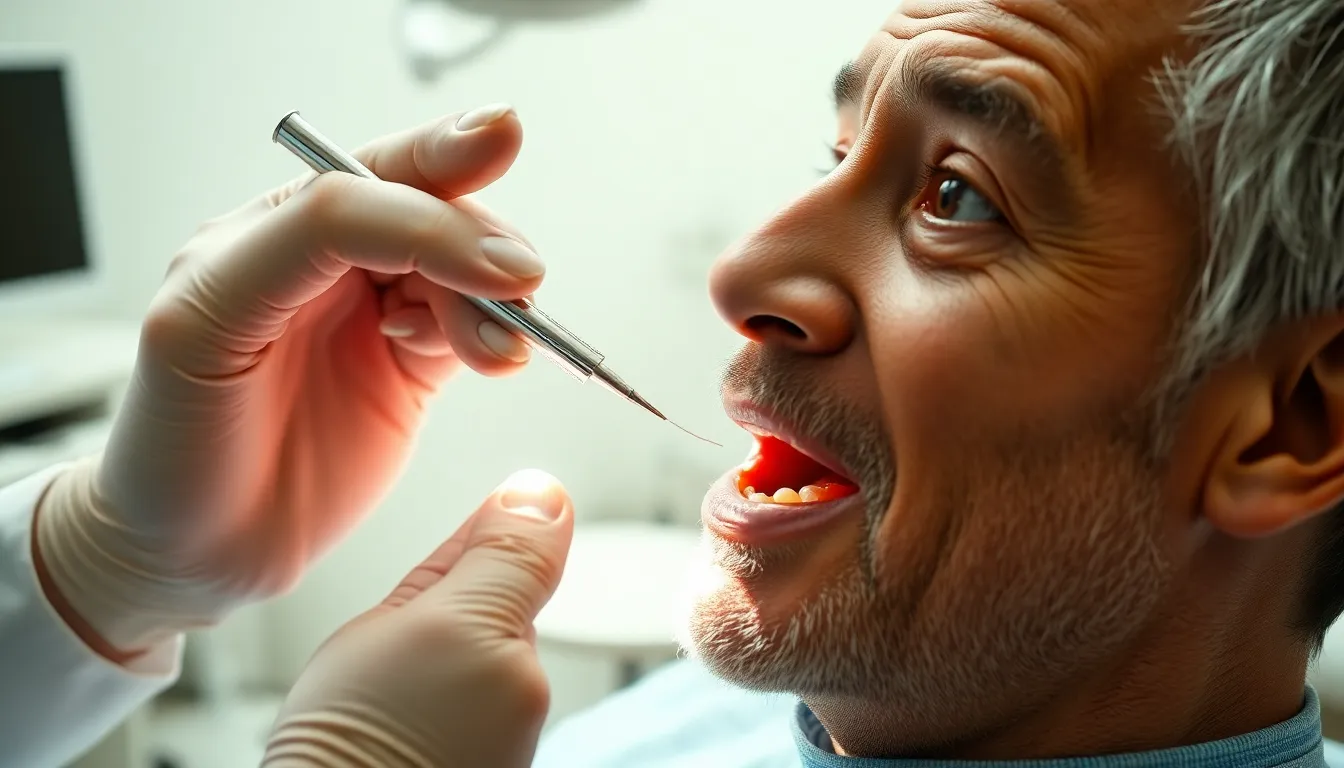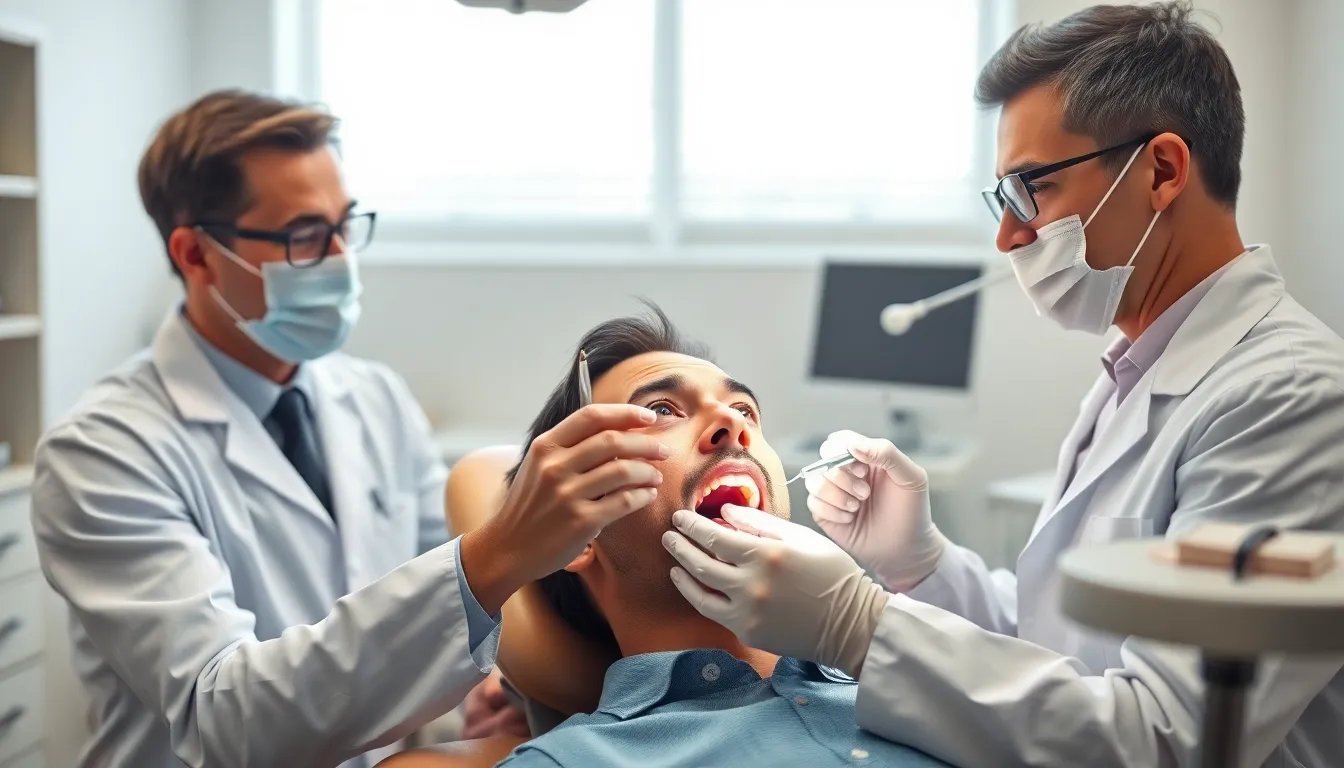Are you frustrated by crooked teeth that affect your smile and confidence? Aligning dentistry offers groundbreaking answers that can dramatically improve your oral health and appearance, giving you the smile you’ve always dreamed of.
When your teeth aren’t properly aligned, you’re facing more than just aesthetic concerns. Misaligned teeth can lead to difficulty cleaning between teeth, increasing your risk of decay and gum disease. They can also cause improper bite function, jaw pain, and even headaches. Modern dental alignment techniques have evolved significantly, making the process more comfortable, efficient, and discreet than ever before.
Understanding Aligning Dentistry: The Perfect Smile Solution
Aligning dentistry represents a specialized approach to correcting misaligned teeth and creating harmonious dental arrangements. Dental alignment techniques have evolved dramatically over the years, offering patients multiple options beyond traditional metal braces. These modern answers address both aesthetic concerns and functional issues simultaneously, creating balanced bites and beautiful smiles.
Dr. Todd B. Harris often shares the story of Sarah, a 32-year-old professional who avoided smiling in photos for years due to her crooked front teeth. “After just six months of clear aligner therapy, Sarah’s confidence transformed completely. She now leads presentations at work without hesitation and can’t stop smiling in every photo,” Dr. Harris recalls.
Proper dental alignment contributes significantly to overall oral health by eliminating hard-to-clean spaces between crowded teeth. Straight teeth are easier to brush and floss effectively, reducing plaque buildup that leads to decay and gum disease. Many patients experience relief from chronic jaw pain and headaches after their teeth are properly aligned, as the correction distributes bite forces evenly across all teeth.
Today’s alignment options include clear aligners, ceramic braces, lingual (behind-the-teeth) braces, and traditional metal braces with modern improvements. Each option offers unique advantages depending on your exact dental needs, lifestyle preferences, and budget considerations. Clear aligners have gained tremendous popularity for their virtually invisible appearance and removable convenience during eating and cleaning.
The alignment process typically begins with comprehensive imaging and bite analysis to create a customized treatment plan. Digital technology now allows patients to preview their expected results before treatment even begins, providing realistic expectations and treatment timelines. Most alignment treatments range from 6-24 months depending on the complexity of your case and your chosen alignment method.
Different Approaches to Dental Alignment

Dental alignment techniques have evolved significantly, offering patients multiple options to achieve a straighter smile. Each approach comes with unique advantages and considerations that make it suitable for different cases and preferences.
Traditional Metal Braces
Traditional metal braces remain one of the most effective answers for correcting complex dental misalignments. These braces consist of metal brackets attached to each tooth, connected by wires that an orthodontist adjusts regularly to gradually shift teeth into proper position. Metal braces offer precise control over tooth movement, making them ideal for addressing severe overcrowding, important gaps, or bite issues. They’re typically more affordable than newer alternatives, with costs ranging from $3,000 to $7,000 depending on treatment complexity.
Dr. Todd B. Harris notes, “I’ve seen remarkable transformations with traditional braces, especially in patients with complicated alignment issues that other methods simply can’t address as effectively. The technology has improved dramatically—today’s metal braces are smaller and more comfortable than those from even a decade ago.”
Clear Aligners and Invisalign
Clear aligners like Invisalign have revolutionized dental alignment by offering a nearly invisible alternative to traditional braces. These custom-made, transparent trays gradually shift teeth into alignment while remaining virtually undetectable during everyday interactions. You’ll receive a series of aligners, each worn for about two weeks before progressing to the next in the sequence. Clear aligners must be worn 20-22 hours daily but can be removed for eating, drinking, and cleaning your teeth.
Amanda, a 28-year-old marketing executive, shares her experience: “I chose Invisalign because client meetings are a big part of my job. The flexibility to remove my aligners for important presentations was perfect, and most people never realized I was undergoing orthodontic treatment. My treatment took 14 months, and the results exceeded my expectations.”
Clear aligners work best for mild to moderate alignment issues and typically cost between $4,000 and $8,000 for full treatment. They’re particularly popular among adults seeking discrete correction options with minimal lifestyle disruption.
Lingual Braces: The Hidden Alternative
Lingual braces offer the effectiveness of traditional braces with added discretion by being attached to the back surfaces of your teeth. This placement makes them completely invisible from the front, providing a perfect solution for professionals, performers, and anyone concerned about the appearance of traditional braces. Lingual braces can correct a wide range of alignment issues, from simple to complex cases.
The customization process for lingual braces involves creating brackets specifically designed for your teeth’s inner surfaces. This personalized approach typically makes lingual braces more expensive than other options, with treatment costs ranging from $8,000 to $10,000. Initial tongue discomfort and speech adjustments are common but usually resolve within a few weeks as you adapt to the braces.
The Science Behind Teeth Alignment

Teeth alignment is a fascinating intersection of biology, biomechanics, and technology that enables orthodontists to create beautiful, functional smiles. The science behind dental alignment involves understanding how teeth respond to carefully applied forces and leveraging biological processes to achieve optimal positioning.
Biomechanics of Tooth Movement
Tooth movement occurs through a biological process called bone remodeling that’s triggered by applying controlled mechanical forces. When pressure is applied to a tooth, it creates areas of compression and tension in the surrounding periodontal ligament. Cells called osteoclasts break down bone in compression areas while osteoblasts build new bone in tension areas, allowing teeth to gradually shift position. This delicate balance requires precisely calibrated forces—too little won’t move teeth effectively, while excessive force can cause root resorption or tissue damage.
Dr. Todd B. Harris explains, “What many patients don’t realize is that we’re not forcing teeth into position—we’re actually guiding the body’s natural remodeling process. It’s remarkable how responsive dental structures are to gentle, consistent pressure.”
The direction of force application is equally important as the magnitude. Orthodontists must consider the three-dimensional positioning of each tooth, accounting for rotation, tipping, and bodily movement to achieve proper alignment. Forces are distributed through various components like brackets, wires, and elastics in traditional braces, or through sequential clear aligners that each make incremental adjustments.
Digital Technology in Modern Alignment
Digital innovations have transformed teeth alignment from an analog art form into a precise digital science. 3D digital scanning has replaced uncomfortable putty impressions, creating detailed digital models of your teeth with remarkable accuracy. The iTero 3D Scanner, for example, captures thousands of images per second to create a comprehensive digital representation of your oral structures.
Computer-aided design and manufacturing (CAD/CAM) technology enables orthodontists to simulate treatment outcomes and visualize the entire tooth movement process before treatment begins. This precision planning means your treatment can be optimized for efficiency and effectiveness from day one.
Clear aligner technology has benefited tremendously from material science innovations. Modern aligners use advanced polymers like SmartTrack® that provide more consistent force application and better tooth conformity than earlier materials. These improvements have expanded treatment capabilities beyond simple cases to address complex bite issues that previously required traditional braces.
Jennifer, a 41-year-old executive who postponed orthodontic treatment for years, shares her experience: “I was skeptical about clear aligners working for my crowded teeth, but the digital simulation showed me exactly how my teeth would move week by week. Six months later, my smile matches what was predicted almost perfectly. The technology is truly impressive.”
Integrated digital platforms now connect every aspect of orthodontic care—from initial scanning to treatment planning, progress monitoring, and refinement. These systems allow for virtual check-ins and remote monitoring, reducing the number of in-office visits needed while maintaining treatment quality and oversight.
Benefits of Properly Aligned Teeth

Properly aligned teeth transform both your oral health and appearance. These benefits extend far beyond just having a pretty smile, affecting your overall wellbeing and quality of life in many ways.
Improved Oral Health
Straight teeth create an environment where optimal oral hygiene becomes much easier to maintain. You’ll find that brushing and flossing effectively reaches all surfaces when teeth are properly aligned, reducing plaque buildup by eliminating those hard-to-reach areas where bacteria typically thrive. Research shows that aligned teeth can reduce dental problems by up to 25%, translating to fewer fillings, crowns, and emergency dental visits.
Your gum health improves dramatically with properly aligned teeth. Food particles and bacteria have fewer hiding spots between straight teeth, significantly lowering your risk of developing periodontal disease—a serious condition that often leads to tooth loss when left untreated.
Aligned teeth distribute bite forces evenly across all teeth rather than concentrating pressure on just a few. This balanced bite prevents excessive wear on individual teeth, reducing the likelihood of cracks, chips, and enamel erosion over time. The protection of your teeth’s structural integrity means they’ll serve you better throughout your lifetime.
“I regularly see patients who’ve struggled with chronic jaw pain for years, only to find complete relief after proper dental alignment,” says Dr. Todd B. Harris. “The connection between misaligned teeth and TMJ disorders is stronger than most people realize. When your bite is balanced, your jaw joints function as nature intended.”
Enhanced Aesthetic Appeal
A straight, harmonious smile dramatically boosts your self-confidence in social and professional settings. People with aligned teeth often smile more freely and engage more confidently in face-to-face interactions. This newfound confidence typically extends beyond social situations into professional environments, where a confident smile can make positive impressions during interviews, presentations, and networking events.
Lisa, a 41-year-old marketing executive, experienced this transformation firsthand: “After completing my alignment treatment, I noticed people responded to me differently. I was smiling without covering my mouth for the first time in decades. Six months later, I landed a promotion I’d been working toward for years. My colleagues later told me my new confidence was impossible to ignore.”
The psychological benefits of properly aligned teeth extend into overall emotional wellbeing. The satisfaction of having a smile you’re proud to show contributes to positive self-image and reduced social anxiety. Many patients report feeling more authentic in their interactions once they no longer feel the need to hide their smile.
Your aligned smile creates favorable impressions even before you speak. Studies confirm that people with straight, well-aligned teeth are often perceived as more professional, successful, and approachable in both personal and business contexts, creating opportunities that might otherwise be missed.
Choosing the Right Alignment Method for You

Selecting the perfect teeth straightening option depends on your unique circumstances and preferences. The right method balances effectiveness with your lifestyle needs, ensuring optimal results with minimal disruption to your daily routine.
Age Considerations
Age plays a crucial role in determining the most suitable alignment approach for your teeth. Children and teenagers often benefit from traditional braces since their jaws are still developing, allowing for more effective restructuring. Adults have expanded options including clear aligners and lingual braces that offer discretion without compromising results. Bone density changes with age can affect treatment speed and effectiveness, sometimes requiring longer treatment periods for older patients.
Dr. Todd B. Harris notes, “I’ve seen remarkable results in patients of all ages, but the approach must be customized specifically to each life stage. A 14-year-old with a developing jaw needs a different strategy than a 40-year-old executive with fully developed dental structures.”
Lifestyle Factors
Your daily activities and social commitments significantly impact which alignment method will work best for you. Fixed appliances like metal, ceramic, and lingual braces require consistent oral hygiene practices and certain dietary adjustments. Removable clear aligners offer flexibility for meals and cleaning, making them ideal for professionals with active social lives. Athletes and performers often prefer less noticeable options that won’t interfere with their activities.
Michael, a 28-year-old sales representative, shares his experience: “I chose clear aligners because my job involves constant client meetings. Being able to remove them briefly for important presentations while still staying on track with my treatment has been invaluable for maintaining my professional image.”
Budget and Insurance Coverage
Financial considerations often determine which alignment options are realistically available to you. Metal braces typically represent the most economical choice, ranging from $3,000 to $7,000, and frequently receive partial insurance coverage. Ceramic braces offer a middle-ground option with improved aesthetics at a somewhat higher price point. Clear aligners like Invisalign can cost between $4,000 and $8,000, while lingual braces tend to be the premium option at $8,000 to $10,000.
Insurance coverage varies significantly across providers and plans, with traditional braces more commonly covered than newer technologies. Many orthodontic practices offer payment plans to make treatment more accessible regardless of your budget constraints.
The Future of Aligning Dentistry

Dental alignment technology is experiencing a revolutionary transformation through innovations that enhance treatment precision and patient experience. Cutting-edge technologies are reshaping how orthodontic care is delivered, making treatments more efficient and accessible than ever before.
AI and Predictive Alignment
Artificial intelligence has fundamentally changed the industry of predictive alignment in dentistry by enabling unprecedented diagnostic accuracy and treatment planning. AI-powered systems now detect dental conditions at earlier stages, allowing for more personalized orthodontic care customized to each patient’s unique dental structure. These intelligent systems automate the design process for various dental appliances including aligners, significantly improving efficiency and treatment outcomes. Dentists can now predict tooth movement patterns with remarkable precision, customizing aligner therapy based on data-driven insights rather than estimation.
“The integration of AI into our alignment workflows has transformed how we approach treatment planning,” notes Dr. Todd B. Harris. “We’re now able to visualize outcomes with such accuracy that patients gain confidence in their treatment journey before it even begins.”
At-Home Monitoring Answers
Remote monitoring technologies have created a important shift in how alignment progress is tracked between office visits. Digital tools, particularly smartphone applications connected with intraoral scanning devices, enable real-time monitoring of tooth movement without requiring frequent in-person appointments. Patients capture images of their teeth using specialized apps, sending them directly to their dentist for evaluation and adjustment recommendations. This technology dramatically improves treatment convenience while ensuring dentists can make timely adjustments to aligners when needed.
The benefits extend beyond convenience, as these monitoring answers often result in shorter overall treatment times. Patients experience fewer disruptions to their daily routines while maintaining the quality of professional oversight. Digital impressions have replaced uncomfortable traditional molds, creating a more pleasant patient experience through fast, precise scanning technology.
Jennifer, a busy executive who recently completed aligner therapy, shared: “The at-home monitoring app made my treatment fit seamlessly into my schedule. I traveled frequently for work but never worried about my progress because my dentist could check my alignment remotely and make adjustments to my treatment plan as needed.”
3D printing advancements have similarly revolutionized aligner production, allowing for rapid, on-demand creation of custom devices that perfectly match patient dental anatomy. This technology typically reduces wait times between treatment stages and enables more responsive care when adjustments are necessary.
The future of aligning dentistry clearly lies at the intersection of AI predictive capabilities and convenient remote monitoring, supported by advancements in digital scanning and 3D printing technology. These innovations continue to deliver smarter, more personalized orthodontic treatments that fit modern lifestyles.
Conclusion
Aligning dentistry has evolved far beyond straightening teeth for appearance’s sake. Today’s innovative techniques offer life-changing benefits for your oral health functional bite and overall confidence.
With options ranging from traditional braces to cutting-edge clear aligners you’ll find a solution that fits your lifestyle and budget. The integration of AI digital monitoring and 3D printing continues to make treatments more precise convenient and comfortable.
Your journey to aligned teeth isn’t just about aesthetics—it’s an investment in preventing future dental problems eliminating jaw pain and transforming how you present yourself to the industry. The science behind modern alignment harnesses your body’s natural processes with remarkable results.
Take the first step toward your ideal smile by consulting with an alignment specialist who can customize your path to dental perfection.
Frequently Asked Questions
What are the main problems caused by misaligned teeth?
Misaligned teeth can cause more than just aesthetic concerns. They increase the risk of tooth decay and gum disease due to difficulty cleaning properly. They can also lead to improper bite function, causing jaw pain and headaches. Additionally, crooked teeth may affect speech and cause premature wear on tooth surfaces, potentially leading to more extensive dental work in the future.
How long does dental alignment treatment typically take?
Treatment duration typically ranges from 6 to 24 months, depending on individual factors including the severity of misalignment, the chosen treatment method, and patient compliance. Simple cases with clear aligners might be completed in as little as 6 months, while more complex cases requiring traditional braces may take up to 2 years to achieve optimal results.
What are the different options available for teeth alignment?
Modern alignment options include traditional metal braces (effective for complex cases), clear aligners like Invisalign (nearly invisible and removable), ceramic braces (tooth-colored for better aesthetics), and lingual braces (attached behind teeth for maximum discretion). Each option has specific advantages and considerations, making them suitable for different cases based on complexity, lifestyle, and budget.
How much do different alignment treatments cost?
Traditional metal braces typically cost between $3,000 and $7,000, making them the most affordable option. Clear aligners like Invisalign range from $4,000 to $8,000. Ceramic braces cost slightly more than metal, while lingual braces are the most expensive at $8,000 to $10,000. Insurance may cover a portion of these costs, and many dental offices offer payment plans.
How does the tooth alignment process work biologically?
Teeth alignment works through a process called bone remodeling. When controlled pressure is applied to teeth, the surrounding bone tissue responds by breaking down on the pressure side and rebuilding on the tension side. This biological response allows teeth to gradually move through the jawbone. Orthodontic appliances simply guide this natural process to achieve the desired tooth positions.
Can adults benefit from teeth alignment, or is it just for teenagers?
Adults of any age can benefit from teeth alignment. In fact, about one in four orthodontic patients today is an adult. Modern alignment options like clear aligners and lingual braces offer discreet treatment that fits adult lifestyles. The biological process of tooth movement works the same regardless of age, though treatment may take slightly longer for adults as bone density increases with age.
How has digital technology improved the alignment process?
Digital technology has revolutionized dental alignment through 3D scanning (replacing messy impressions), computer-aided design for precise treatment planning, virtual outcome simulations showing patients their expected results, and remote monitoring capabilities allowing fewer in-office visits. These advancements have made treatment more comfortable, efficient, and personalized while improving the accuracy of final outcomes.
What health benefits come with properly aligned teeth?
Properly aligned teeth offer significant health benefits beyond aesthetics. They’re easier to clean, reducing plaque buildup and lowering the risk of cavities and gum disease. Alignment helps distribute bite forces evenly, preventing excessive wear on individual teeth. It can also alleviate TMJ disorders, reducing chronic jaw pain and headaches, and potentially improving speech and digestion.
How do I choose the right alignment method for my needs?
Choosing the right alignment method depends on several factors: the complexity of your misalignment, your lifestyle and aesthetic preferences, budget constraints, and treatment timeline goals. Schedule consultations with qualified orthodontists who can assess your specific case, explain appropriate options, demonstrate expected outcomes using digital technology, and help you weigh the pros and cons of each approach.
What innovations are shaping the future of dental alignment?
The future of dental alignment is being shaped by AI-powered diagnostics and treatment planning, remote monitoring technologies allowing virtual check-ins via smartphone apps, advanced 3D printing for custom aligners, and improved materials that move teeth more efficiently and comfortably. These innovations are making treatment faster, more convenient, and increasingly personalized to each patient’s unique dental anatomy and lifestyle needs.







